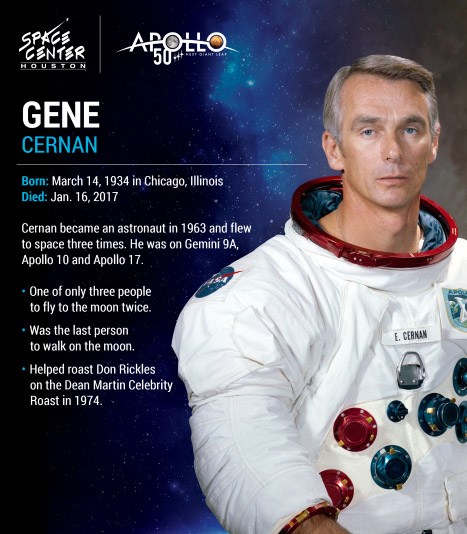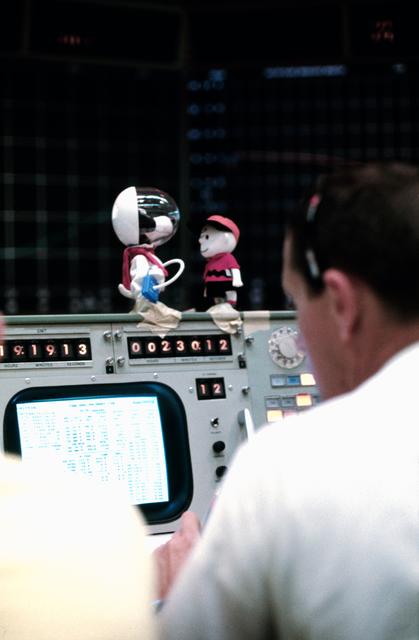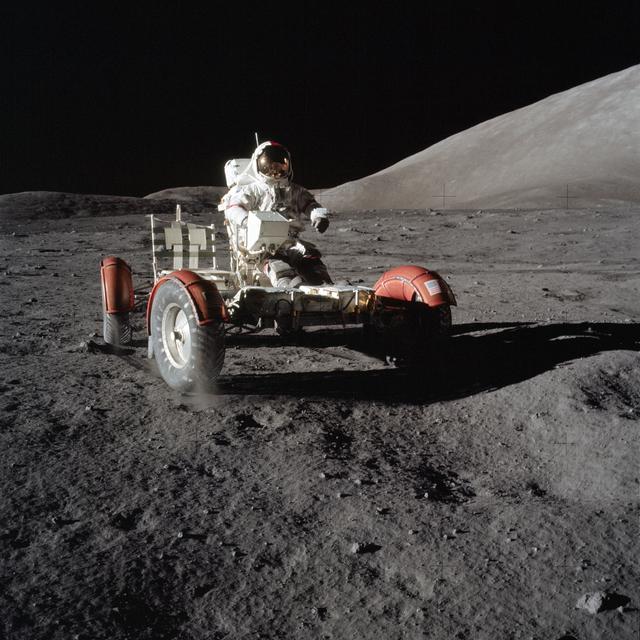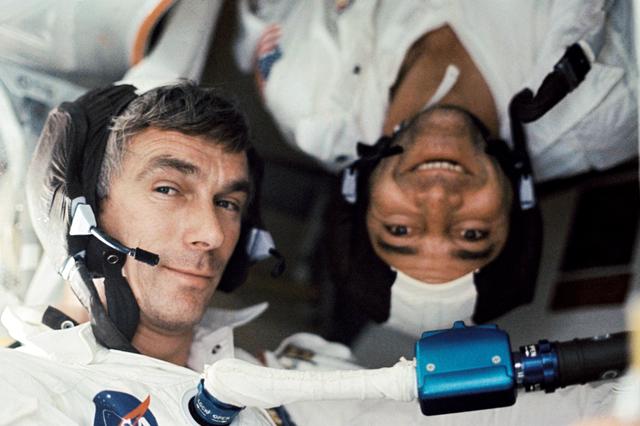Neil Armstrong may be known for being the first human on the Moon, but today we are highlighting the last, Gene Cernan.
Cernan is a veteran of three spaceflights, having flown aboard Gemini 9, Apollo 10 and Apollo 17.
The last mission to the Moon established many new spaceflight records, including the longest lunar landing flight (301 hours, 51 minutes), the longest extravehicular activities on the lunar surface (22 hours, 6 minutes), and the largest amount of lunar samples returned to Earth (roughly 249 pounds).
Apollo 17 was also the first nighttime launch of the Saturn V rocket and in route to the moon, the crew took one of the most iconic photographs in human spaceflight history, known as “The Blue Marble”.
Before he left the Moon, Cernan left his daughter’s initials behind in the lunar dust.
Here are three little-known fun facts about the astronaut and his Apollo missions that show off Cernan’s pioneer spirit!
1. He and the Apollo 10 crew got permission from cartoonist Charles Schulz to name the command module “Charlie Brown”, and the lunar module “Snoopy”!
As Cernan recalls in his book, The Last Man on the Moon, “The image-conscious NASA public relations people who felt that “Gumdrop” and “Spider” weren’t really serious enough names for the historic value of Apollo 9 were even more underwhelmed when we obtained permission from Peanuts cartoonist Charles Schulz to christen the CM ‘Charlie Brown’ and call the LM ‘Snoopy’. The PR-types lost this one big-time, for everybody on the planet knew the klutzy kid and his adventuresome beagle, and the names were embraced in a public relations bonanza.”
The crew decided on the name “Snoopy” because the lunar module would get as close as 10 miles from the surface of the moon, with the sole purpose of “snooping” out the lunar surface below.
People loved the names, and soon, all kinds of items bore the dog’s image, like sweatshirts, buttons and more.
Today, NASA and Peanuts Worldwide continue to work together to engage the public in STEM learning with Astronaut Snoopy.
2. He used duct tape to fix an issue with the lunar rover on the surface of the moon
Cernan showed that duct tape is one of the handiest tools you can carry when he used the material to patch-up the lunar rover roughly 238,855 miles from Earth.
The lunar rover traversed more than 18 miles of the lunar surface during the Apollo 17 mission. However, at one point, one of Cernan’s tools, a rock hammer which he had a habit of putting in one of his suit pockets, ripped a piece of the fender off the rover.
The astronauts needed to fix the fender, otherwise the lunar dust would pose a problem for the duo.




The team made quick work by using some geology maps, clamps, and duct tape to fashion a new make-shift fender.
Apparently, car trouble can happen anywhere.
Check out this short clip below where Gene Cernan details their rover troubles on the moon and how they overcame the challenge!
3. Cernan’s voice is featured in the opening for Daft Punk’s song “Contact”!
When you take a listen to Daft Punk’s song “Contact” off their Random Access Memories album, you might hear a space mission broadcast at the beginning. That’s communication between NASA flight controller Robert Parker and Cernan during his Apollo 17 mission.

If you listen closely, you can hear Cernan say: “Hey Bob I’m looking at what Jack was talking about and it’s definitely not a particle that’s nearby. It is a bright object and it’s obviously rotating because it’s flashing, it’s way out in the distance, certainly rotating in a very rhythmic fashion because the flashes come around almost on time. As we look back at the earth it’s up at about 11 o’clock, about maybe ten or twelve diame…Earth diameters. I don’t know whether that does you any good, but there’s something out there.”
So, just what is he talking about exactly? As the astronauts left Earth on their journey to the moon, Cernan sees an object floating alongside the capsule and is unsure what it is. The transmission continues further to detail a conversation between the crew and ground control to figure out exactly what it is floating in space beside them. The crew believed it to be either a panel from the capsule or a piece of the discarded stage of the Saturn V rocket that propelled them into space.
Daft Punk used this neat NASA transmission from a historic flight to create a cool synthesized track that seems to celebrate a voyage into the unknown. Cernan’s final mission to the moon is kept alive through the opening of a cosmic-electronic hook that takes listeners on a journey into space alongside the crew of Apollo 17.
Want to learn more about NASA astronaut Gene Cernan? Check out his bio here or watch Cernan in his 2014 documentary film, The Last Man on the Moon.








